
The Castro Theatre is a historic movie palace in the Castro District of San Francisco, California. The venue became San Francisco Historic Landmark #100 in September 1976. Located at 429 Castro Street, it was built in 1922 with a California Churrigueresque façade that pays homage—in its great arched central window surmounted by a scrolling pediment framing a niche—to the basilica of Mission Dolores nearby. Its designer, Timothy L. Pflueger, also designed Oakland's Paramount Theater and other movie theaters in California during that period. The theater has over 1,400 seats. The theater's ceiling is the last known leatherette ceiling in the United States and possibly the world. Another leatherette ceiling was demolished just a few years ago. To make the ceiling look as though it is leather requires a special technique regarded as lost today.

A theatre organ is a type of pipe organ developed to accompany silent films, from the 1900s to the 1920s.
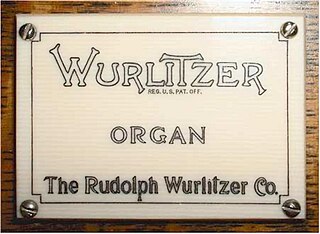
The Rudolph Wurlitzer Company, usually referred to as simply Wurlitzer, is an American company started in Cincinnati in 1853 by German immigrant (Franz) Rudolph Wurlitzer. The company initially imported stringed, woodwind and brass instruments from Germany for resale in the United States. Wurlitzer enjoyed initial success, largely due to defense contracts to provide musical instruments to the U.S. military. In 1880, the company began manufacturing pianos and eventually relocated to North Tonawanda, New York. It quickly expanded to make band organs, orchestrions, player pianos and pipe or theatre organs popular in theatres during the days of silent movies.

The Alabama Theatre is a movie palace in Birmingham, Alabama. It was built in 1927 by Paramount's Publix Theatres chain as its flagship theater for the southeastern region of the United States. Seating 2,500 people at the time, it was the largest in the Birmingham theater district. The district was once home to many large theaters and movie palaces that featured vaudeville, performing arts, nickelodeons and Hollywood films. Built to show silent films, the Alabama still features its original Wurlitzer theater organ. The Alabama Theatre and Lyric Theatre are the district's only remaining theaters, and the Alabama is the only theater still in operation.
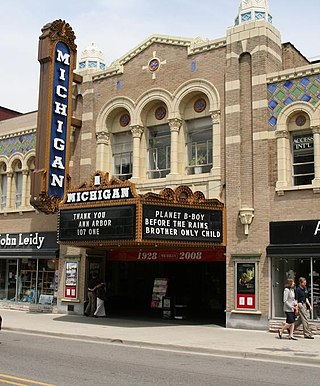
The Michigan Theater is a movie palace in Ann Arbor, Michigan, United States, near the Central Campus of the University of Michigan. It shows independent films and stage productions, and hosts musical concerts.
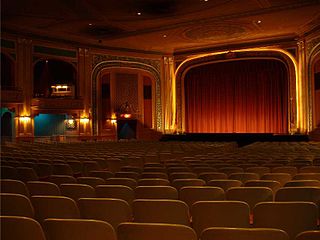
The Lafayette Theatre is a nationally acclaimed movie palace located in downtown Suffern, New York, built in 1923. Its primary function is first-run movies, but it also houses special events like its popular weekly Big Screen Classics film shows. It is also notable for housing a Wurlitzer theatre organ, which is played before Big Screen Classics shows.

Austin Organs, Inc., is a manufacturer of pipe organs based in Hartford, Connecticut. The company is one of the oldest continuously-operating organ manufacturers in the United States. The first instruments were built in 1893 with the Austin Patent Airchest, and many remain in fine playing condition to this day.
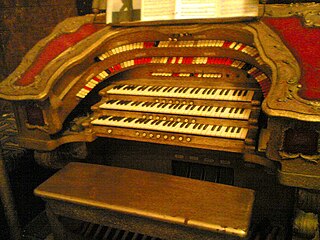
The Bartola Musical Instrument Company of Oshkosh, Wisconsin, USA, was a producer of theater pipe organs during the age of silent movies.

The Orpheum Theatre, a 2,308-seat venue listed on the National Register of Historic Places, is located in downtown Memphis, Tennessee, on the southwest corner of the intersection of South Main and Beale streets. The Orpheum, along with the Halloran Centre for Performing Arts & Education, compose the Orpheum Theatre Group, a community-supported nonprofit corporation that operates and maintains the venues and presents education programs.
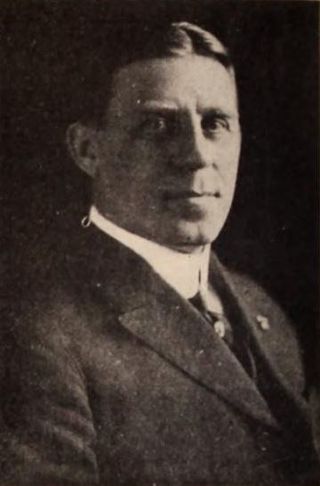
John H. Kunsky (1875–1952) was a Detroit area businessman who made his fortune by investing in movie theaters. He later became partners with George W. Trendle and invested in radio.

The Paramount Theatre is a concert venue in Denver, Colorado, located on Glenarm Place, near Denver's famous 16th Street Mall. The venue has a seating capacity of 1,870 but is a popular destination for large acts looking for a smaller concert setting. With spelling as Paramount Theater, the building was listed on the National Register of Historic Places in 1980.
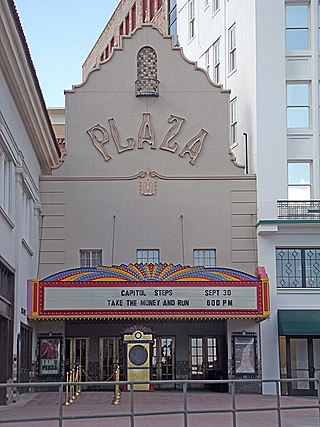
The Plaza Theatre is a historic building in El Paso, Texas built in 1930. The theater stands as one of the city's most well-known landmarks, and remains operational today. The theatre is a National Historic Building of Significance featuring the 2,050-seat Kendall Kidd Performance Hall, and the smaller 200-seat Philanthropy Theatre. It hosts Broadway productions, musical concerts, individual performers and the annual Plaza Classic Film Festival.

The Redford Theatre is an atmospheric theatre in the Old Redford neighborhood of Detroit. The theatre opened in January 1928, advertised as "Detroit's most unique suburban theatre," due to its grand design, featuring Japanese and Chinese motifs.

The Riviera Theatre is a historic, 1140 seat entertainment venue in North Tonawanda, New York. The theatre hosts a multitude of performing arts events per year, including live concerts, theatre, dance shows, and movies. The Riviera's “Mighty Wurlitzer” theatre organ has been fully restored, is continually maintained by volunteers, and is famed as being one of two original Wurlitzer demonstrator organs, which the company would use to show off to potential clients in the height of the silent film era.

The Stanford Theatre is a classical independent movie theater in Palo Alto, California. It was designed and built in the 1920s as a movie palace styled in neoclassical Persian and Moorish architecture. Today it specializes in films produced between 1910 and 1970 and seasonal programs typically include film festivals for various genres, directors, and actors, such as Alfred Hitchcock, Bette Davis, and Cary Grant. The Stanford Theatre frequently accounts for as much as twenty-five percent of all classic film attendance in the United States.

Martin Ellis is an American church, concert and theatre organist. He is currently the organist for Rose City Park Presbyterian Church in Portland, Oregon. He was Principal Organist and Assistant Music Director at North United Methodist Church, and Senior Staff Pianist/Organist, Staff Arranger and Orchestrator for the Indianapolis Children's Choir and Youth Chorale in Indianapolis, Indiana until August, 2014. He works with Gresham High School's Theatre Arts Department as their resident piano accompanist.
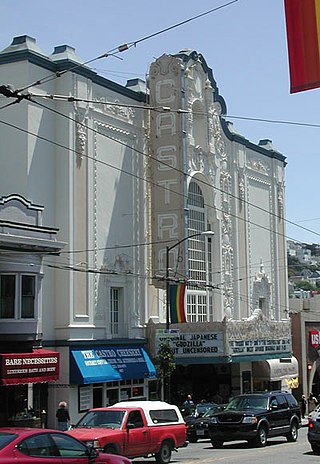
The Castro Organ Devotees Association (CODA) is an American nonprofit organization dedicated to preserving and enhancing the tradition of live organ music in San Francisco's Castro Theatre. The theater is a popular San Francisco movie palace, built in the 1920s, which gained Historic Landmark status in 1976. The original Robert Morton organ was removed in the 1950s. The present organ, widely regarded as one of the finest theatre organs assembled, was assembled in the late 1970s using components from other organs, including its console, which was originally built in 1925 for the State Theatre in Detroit, Michigan to accompany silent pictures. The current console and organ were built by the Taylor family starting in 1979, and it has been owned and maintained by them since, but in 2014 they moved taking the console and one fourth of the pipework.
The Organ Grinder Restaurant was a Portland, Oregon pizzeria in operation from 1973 to 1996. At one point it housed the largest theater pipe organ of its type in the world.




















